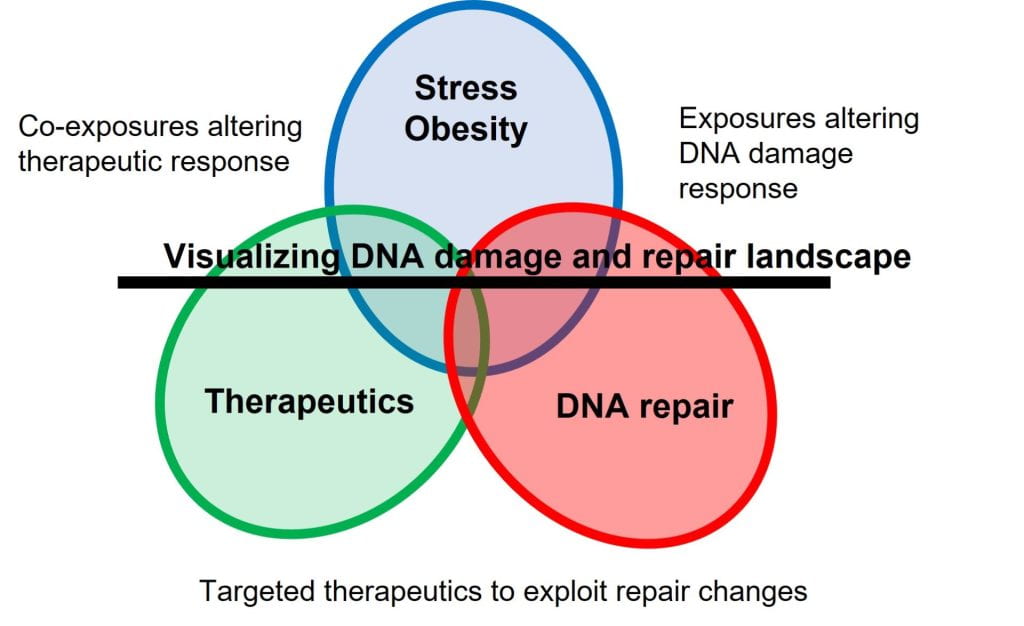Gassman Lab- Exploring interactions between environmental exposures and DNA repair

Environmental exposures and neoplastic changes modulate cells’ DNA damage response and repair pathways. These changes leave mutagenic lesions within the DNA, resulting in mutations and chromosomal damage. The Gassman lab has three primary research areas that examine the modulation of DNA damage response and repair pathways. The first focus area is examining how environmental exposures that induce stress, inflammation, or obesity, like bisphenol A or dihydroxyacetone (a combustion product from electronic cigarettes), induce DNA damage and alter the response of repair pathways. The second focus area examines the impact of dysregulated DNA repair on cancer development and genomic stability. Finally, the third research area examines how co-exposures and/or DNA repair modulation changes therapeutic response. We pursue these research areas using a combination of molecular biology and fluorescence microscopy.
While there are many approaches for examining DNA repair, we are particularly interested in measure genotoxicity and understand DNA lesions in disease. We have developed techniques to measure altered DNA repair in normal and tumor cells to determine defects in DNA repair pathways that mutation or gene expression changes may not identify. DNA repair defects can be identified by measuring the lesions remaining within the genome, providing a better understanding of interactions within DNA repair pathways. Using this knowledge, the Gassman lab hopes to improve therapeutic selection and patient outcomes by mapping the modified DNA repair landscape in cancer. Their current focus areas are breast, ovarian, and prostate cancers. The lab’s long-term goal is to understand gene-environment interactions and their impact on genomic stability and human disease. More information about on-going research projects is found here.

